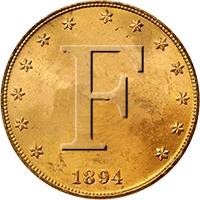I've been coin shooting here in the Midwest for over 38 years. Keep in mind that this area wasn't settled until the mid-1850's, but I could count the coins I've found at depths exceeding 10 inches, on one hand. I have dug plenty of trash at depths exceeding that. So I know I am hitting deeper targets. Just not coins. I am convinced that there are FAR more old coins still hiding out there due to target masking (or folks using too much discrimination) than it being a matter of depth. With all that said, I like to run my Sensitivity as high as I can, without causing false signals with each sweep. When I do get a false signal, it is usually because I am sweeping too fast or I've lifted the coil when changing directions (at the end of each pass).
The Threshold does not change. It simply goes away and is replaced by a tone that represents the notch value of the target under the coil. Or, if that target notch has been set to reject, the Threshold is "blanked out". As to the sound the detector makes, it either beeps or it don't. In the old days, the sound was directly tied to the target "intensity". But with the digital age, threshold and target tones are independently generated by the electronics and software. When a target is passed over, the Threshold goes away and is replaced by either a target tone or the silence of a rejected notch value target.
The TID is very accurate on the X-TERRA. Many of the detectors I've used in the past would only provide accurate target information for the first 6 - 8 inches. But now that tones and digital displays are directly tied to the notch system of discrimination, I find the target ID to be accurate to the maximum depth obtainable. One thing I have noticed is that the visual target information "lags" behind the audio information. In other words, if you watch the meter as you listen for the sounds, you will hear the target sound before the number appears on the display. That is why you might get a single target that seems to "bounce" on the meter. If you listen to the tones, you'll find that it will "lock on" more quickly than the meter.
Personally, I don't use the arrows to determine the depth. Visual TID is based on an average coin sized target. So what is average? If they programmed it based on a dime, a half dollar would skew the depth indicator. And vice versa. I figure that if I have done a good job of pinpointing, I can dig straight down and find it sooner or later, regardless of the size of the coin. In addition to checking the hole after popping the initial plug, my electronic probe comes in very handy!
I believe the key to finding old coins is to sweep more slowly, overlap your swaths by 1/2 on concentric coils or 1/3 on DD coils, properly set the NC at each and every site, set the Threshold so it is just barely audible, maintain a proper GB, run the Volume at max, run with as much Sensitivity as you can (without causing false signals) and most importantly, research your area to find sites that others may not have discovered. JMHO HH Randy
